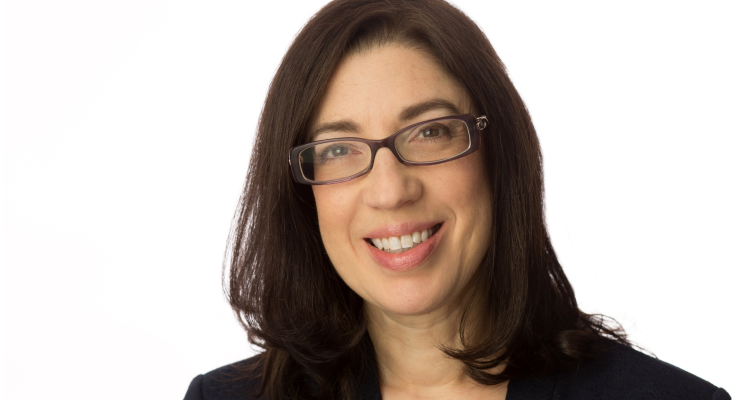
I’m 44 with $1 million in my 401(k), IRA and Roth IRA. Since my total household is above the threshold for investing in a Roth IRA, I have been considering employing the backdoor Roth IRA tactics. I left $700,000 in a 401(k) at my old employer. I am trying to strategize on “distributing” the old 401(k) balance into a traditional IRA while not exceeding my current tax bracket and couple that with a subsequent backdoor Roth conversion but I don’t know how to get started. For one, is there a max amount on how much I can convert using a backdoor Roth (ideally, an amount that doesn’t push you into the next tax bracket)? Do I have to open a new set of traditional and Roth IRAs, considering I have both currently? I will get a good monthly pension and a decent Social Security benefit (totaling $70,000 in 2045) so I figure converting most, if not all my 401(k), using a backdoor Roth is a good financial move assuming I maintain a good health. Any advice?
– The Tax Hater
Converting traditional retirement accounts into Roth IRAs may help you save a lot of money in taxes over the long run. But at the time of the conversion, you’ll have a big tax bill to pay. There’s no limit on how much you can convert at once or how many conversions you can do in a year, but with big balances like the one you have, you might want to take it slower. You can minimize the tax hit by strategically spreading out your conversions over several tax years and potentially tapping into other tax-saving strategies. The rules and the calculations can get tricky, so it’s best to work with an experienced tax professional to keep the taxes manageable.
A financial advisor can help you execute a backdoor Roth conversion and answer other retirement-related questions? Connect with a financial advisor today.
Benefits of Roth IRAs

Roth IRAs come with a number of tax benefits. Since they’re funded with after-tax dollars, you don’t get a tax break now. However, they offer completely tax-free withdrawals, including account earnings. That means you get the benefit of potentially decades of growth without ever paying tax on it.
Another big benefit: Roth IRAs are not subject to required minimum distributions (RMDs). That means you don’t have to take money out if you don’t want to, giving your money even more time to grow tax-free. It also gives your heirs access to more tax-free funds in the future.
Lastly, you can contribute to Roth IRAs no matter how old you are as long as you have eligible earned income. (And if you need help deciding how to split your savings between Roth accounts and tax-deferred accounts, consider speaking with a financial advisor.)
Contributing to a Roth IRA is subject to annual income limits: if your income exceeds $161,000 in 2024 and you file single, you aren’t eligible to contribute to a Roth IRA. However, you can contribute to a traditional IRA or 401(k) and then do a Roth conversion via a legal loophole known as the backdoor Roth IRA.
3 Reasons to Move Out of Old Employer Retirement Accounts
While most people have the option of keeping their employer-based retirement accounts intact even after they leave that job, it’s often better to roll those accounts over into IRAs. Making that move can benefit you in three important ways:
- More investment options: Most employer plans have a fairly limited range of investment options. With an IRA, you’ll have access to a whole world of securities that can make it easier to meet your financial goals.
- Lower fees: Employer-based retirement plans come with a lot of fees that you don’t necessarily see. Those can include plan management fees, investment management fees, service fees and administrative fees. Whatever they’re called, they can add up and eat away at your account balance. Many institutions offer fee-free IRAs, removing that heavy drag on your contributions and earnings.
- More control: When you roll over an employer plan into an IRA, you get to make every choice from the brokerage that custodies your account to the mix of investments you hold. It can be easier to find and access information. Plus many brokerages offer additional incentives like fee-free funds and trades.
Though it may seem like a hassle, it’s actually very easy to roll over your 401(k) into an IRA or convert it into a Roth IRA. (Remember, a financial advisor can help with rollovers, conversions and managing your retirement savings.)
How to Do a Roth Conversion
The mechanics of a Roth conversion are pretty straightforward. You contact the trustee or administrator of the traditional account you want to take money from and let them know you want to do a Roth conversion. Sometimes you’ll have a choice for the conversion method, sometimes you won’t. The three basic options include:
- A trustee-to-trustee transfer, or direct rollover, where you tell the financial institution that houses your traditional 401(k) or IRA to transfer the funds directly to your account at a different institution. Once in your new IRA, you can convert it into a Roth account.
- An in-house trustee (also called same-trustee) transfer, where you tell the institution that houses your traditional 401(k) or IRA to transfer the funds directly to your Roth account within the same institution.
- An indirect rollover, where you take a distribution from your traditional 401(k) or IRA as a check, then deposit the full amount into your new account within 60 days. From there, you can convert your new IRA into a Roth account.
Whenever possible, avoid the indirect rollover method. If you don’t complete that deposit within the 60-day window, the IRS will treat it as a taxable distribution subject to income taxes and a 10% early withdrawal penalty (unless you’re at least 59.5 years old).
Whichever method you use, you’ll report the conversion on IRS Form 8606 when you file your tax return. (A financial advisor can help you manage your IRAs and select investments that align with your retirement timeline.)
Effective Strategies for Roth Conversions

There are a few things you can do to keep the Roth conversion tax bite to a minimum.
First, you can time the conversion for when the current value of your retirement account has dropped due to market conditions. The lower value will lead to a lower tax bill on the conversion.
Second, you can convert all or part of your retirement account in a year when you have lower than usual income. This will put you in a lower tax bracket to start, reducing the overall tax bill.
Finally, and usually the most beneficial method, is to spread the conversion out over several years. This offers you the most flexibility and reduces the odds of the conversion from bumping you into a higher tax bracket.
Here’s how it can work:
Suppose you have $500,000 in a 401(k). You file your taxes as single, and your other taxable income comes to $120,000, which puts you in the 24% tax bracket. If you converted the entire $500,000 in 2024, your taxable income would shoot up to $620,000. That would land you in the 37% bracket, affecting a good chunk of the conversion.
Instead, you could do a partial conversion. The 24% tax bracket tops out at $191,950 for single filers in 2024. So you could convert up to $71,950 without slipping into the 32% tax bracket. If you wanted to do more than that, you could convert up to $123,725 at the 32% rate without getting pushed into the 35% bracket.
Combining these methods with a main focus on the third can help you minimize the overall total tax burden of the conversion. (But if you need additional guidance on how to execute a Roth conversion, SmartAsset’s free tool can help you connect with a fiduciary financial advisor.)
Understand the 5-Year Rule
Before you convert your retirement savings into a Roth IRA, it’s important to understand the five-year rule on Roth conversions.
Converted funds (as opposed to contributed funds) have to stay in the Roth IRA for five years before you can withdraw them. If you take withdrawals before then, it could trigger the 10% early withdrawal penalty. The five-year timeline starts on January 1 of the year you made the conversion. For example, if you convert $50,000 into a Roth IRA in September 2024, the clock starts on Jan. 1, 2024 and lasts until Jan. 1, 2029.
This rule applies to each conversion separately. So if you do make a series of conversions to minimize their tax consequences, the five-year clock for each one starts in the year it was done. (A financial advisor can help you abide by the various rules, including the five-year rule, when executing a Roth conversion.)
Bottom Line
If you’ve decided to convert traditional retirement accounts into a Roth IRA, take proactive steps to minimize the tax bill so you get to keep more of your money. You’ll pay less tax now and no tax later when you eventually begin to qualified withdrawals from the account later.
Retirement Planning Tips
- Required minimum distributions (RMDs) can throw a wrench in your plan for retirement. These mandatory withdrawals from tax-deferred retirement accounts begin at age 73, increasing your tax liability and potentially pushing your income into a higher marginal tax bracket. That’s why planning ahead is critical. SmartAsset’s RMD calculator can help you estimate how much your first RMD will be and when it will be due.
- Whether you’re interested in doing a backdoor Roth conversion or need to lower your tax liability in retirement, working with a financial advisor can help you plan for your golden years. Finding a financial advisor doesn’t have to be hard. SmartAsset’s free tool matches you with up to three vetted financial advisors who serve your area, and you can have a free introductory call with your advisor matches to decide which one you feel is right for you. If you’re ready to find an advisor who can help you achieve your financial goals, get started now.
Michele Cagan, CPA, is a SmartAsset financial planning columnist and answers reader questions on personal finance and tax topics. Got a question you’d like answered? Email AskAnAdvisor@smartasset.com and your question may be answered in a future column. Question may be edited for length or clarity
Please note that Michele is not a participant in SmartAsset AMP.
Photo credit: ©iStock.com/Kameleon007, ©iStock.com/Luke Chan